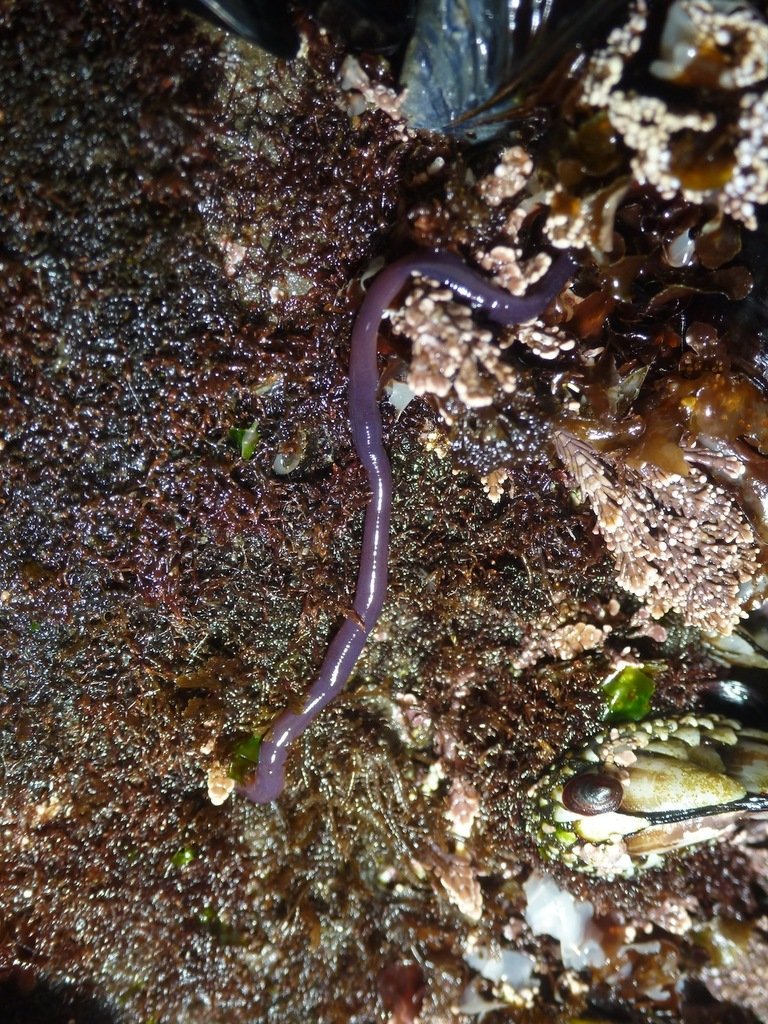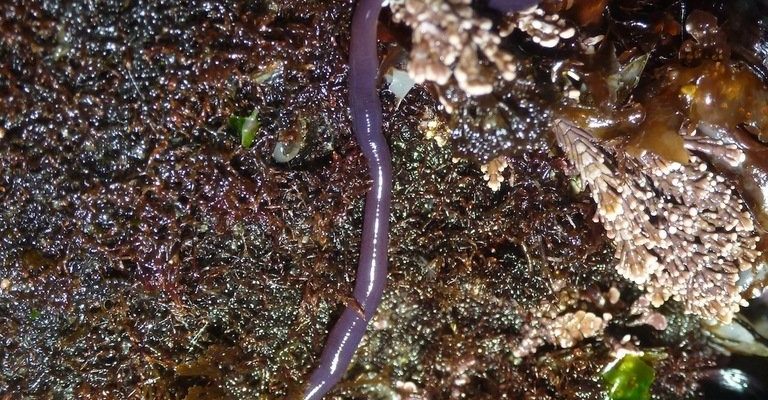
Imagine walking along a beach with the tide receding, revealing a unique landscape. It’s like nature’s own treasure hunt, where each tide brings new wonders to discover. Ribbon worms, also known as nemerteans, are a part of this rich tapestry. They can stretch out to impressive lengths, some even reaching several feet, and their movement can look almost fluid, like a ribbon dancing in the breeze. Let’s dive into the world of ribbon worms and see why observing them can be such a captivating experience.
What Are Ribbon Worms?
Ribbon worms are fascinating creatures that belong to the phylum Nemertea. They are known for their elongated, soft bodies, which can vary in color from vibrant reds and greens to more muted shades of brown or beige. You might be wondering, “What makes them so special?” Well, they have a unique hunting style that sets them apart from many other marine animals.
These worms possess a proboscis, a specialized feeding organ that can extend rapidly to capture prey. This makes them effective predators, feeding primarily on small invertebrates, like crustaceans and other worms. Some species even have the ability to produce a sticky secretion to ensnare their prey. Isn’t that fascinating? Watching them in action can feel like watching a live nature documentary unfold right in front of you!
Why Observe Ribbon Worms in Intertidal Zones?
Observing ribbon worms in intertidal zones can be a rewarding experience for several reasons. For starters, it gives you a chance to see a part of marine life that many people overlook. While you may see crabs scuttling about or seagulls diving, ribbon worms are often hidden beneath the sand or lurking among the rocks.
Here’s the thing: when you’re knee-deep in the intertidal zone, you’re not just looking at the water’s edge; you’re uncovering a hidden ecosystem. This area is a melting pot of various species, and ribbon worms play a role in maintaining the balance of life here. By observing them, you’re gaining a deeper understanding of marine biodiversity. Plus, it’s a great way to connect with nature—something we all need from time to time.
Where to Find Ribbon Worms
If you’re eager to spot some ribbon worms, you’ll need to know where to look. These creatures thrive in the **intertidal** zone, which is the area between the high tide and low tide marks. This means that the best time to observe them is during low tide when the water recedes and exposes the sandy and rocky substrates.
Ribbon worms often hide in sandy or muddy environments, so look for them beneath rocks or in tidal pools. They tend to blend into their surroundings, which can make them hard to spot at first. You might find it helpful to bring along a small hand trowel or a spoon to gently dig into the sand.
Here’s a quick guide to help you locate these elusive creatures:
- Visit during low tide for the best visibility.
- Check under rocks and in small crevices.
- Look for them in tidal pools where they might be surfacing.
- Be gentle while digging; you don’t want to harm their habitat.
How to Safely Observe Ribbon Worms
Once you’ve found a ribbon worm, it’s essential to observe them safely and respectfully. You might be tempted to pick them up, but these creatures are delicate and can be easily injured. Instead, try watching them from a distance.
Use a magnifying glass if you want a closer look—it can reveal amazing details about their structure and movement. Just be sure not to disturb their habitat. Maintaining a respectful distance helps to ensure that the ecosystem remains healthy and that you can enjoy future visits.
Here are a few tips for safe observation:
- Don’t handle the worms unless necessary; aim to observe from a distance.
- If you do pick one up, wet your hands first to avoid damaging their skin.
- Take notes or photos if you’re looking to document your findings.
- Leave the area as you found it to protect the local marine life.
The Role of Ribbon Worms in the Ecosystem
You might not realize it, but ribbon worms play a significant role in the marine ecosystem. As predators, they help keep populations of smaller invertebrates in check, contributing to a balanced food web. This balance is essential for maintaining the health of intertidal zones, which are crucial habitats for many marine species.
Moreover, when they consume prey, ribbon worms help recycle nutrients back into the environment. This process supports the growth of other organisms, creating a thriving community. Observing their behavior can give you insights into how interconnected marine life truly is—something that often goes unnoticed by casual beachgoers.
Understanding their ecological role adds depth to your observations. You’re not just watching a creature; you’re witnessing a vital part of a larger story unfolding in the intertidal world.
Challenges and Threats Facing Ribbon Worms
Like many marine organisms, ribbon worms face challenges from human activity and environmental changes. Coastal development, pollution, and climate change can all impact their habitats. Increased water temperatures, for instance, can affect their distribution and reproductive patterns.
Additionally, over-collecting by enthusiasts can deplete local populations. It’s essential to enjoy observing these creatures without exploiting them. Always follow local regulations when exploring intertidal zones, and consider participating in conservation efforts to help protect these fascinating animals.
We can all make a difference by being mindful of our impact on the environment. Supporting local conservation initiatives can be a great way to ensure the future of ribbon worms and their habitats remains bright.
Tips for Educating Others About Ribbon Worms
If you find observing ribbon worms as captivating as I do, why not share that enthusiasm with others? Educating friends or family can spark a broader interest in marine life. You could organize beach clean-ups that also include informational sessions about what you’ve learned on your explorations.
You might say something like, “Did you know that these long, wiggly worms are more than just cool to look at? They play an important role in their ecosystem!” Sharing fun facts and your observations can make learning about wildlife engaging and exciting.
Consider creating a simple pamphlet or using social media as a platform to share photos and facts about ribbon worms. You’d be amazed at how quickly interest can grow!
Getting out into the intertidal zone to observe ribbon worms can be more than just an outing—it’s an invitation to explore the hidden wonders of marine life. With their fascinating adaptations and ecological importance, these creatures are worth your attention and respect.
So, the next time you find yourself at the beach, take a moment to look closer at the sand and rocks. You might just discover a ribbon worm gracefully wriggling its way through the tide pools, reminding us of the beauty and complexity of life beneath the waves. Enjoy the adventure, and remember to leave the ecosystem just as you found it, ready for the next curious observer!

